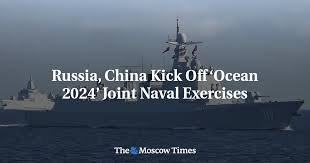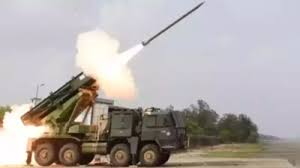Russia-China Warships Enter Sea of Okhotsk for Drills
Introduction to the Naval Exercises
In a significant military collaboration, warships from Russia and China have entered the Sea of Okhotsk to participate in joint naval drills. This event marks a notable step in the strengthening of military ties between the two nations, especially amid ongoing geopolitical tensions in the region. The exercises aim to enhance naval cooperation, improve combat readiness, and demonstrate the strategic partnership between Russia and China.
Details of the Naval Drills
The naval drills, dubbed “Joint Sea 2024,” involve multiple warships and submarines from both countries. The exercises are designed to simulate various maritime scenarios, including anti-submarine warfare, rescue operations, and joint maneuvering. According to military officials, these drills are not only a display of strength but also a preparation for potential real-world scenarios in the Asia-Pacific region.
Geopolitical Implications
The entry of Russian and Chinese warships into the Sea of Okhotsk has significant geopolitical implications. This region is strategically important due to its proximity to Japan and the United States’ military bases. The joint exercises signal a united front against perceived threats from Western nations, particularly as tensions rise over territorial disputes in the South China Sea and other areas. This collaboration may prompt reactions from neighboring countries and further complicate the security dynamics in the region.
Response from Global Powers
The United States and its allies have expressed concern over the increasing military cooperation between Russia and China. Analysts warn that such drills could lead to escalated military activities in the region, raising the stakes for potential conflicts. The situation is being closely monitored, with diplomatic efforts likely to intensify in response to these developments.
Conclusion
As Russia and China deepen their military ties through these naval exercises, the global geopolitical landscape continues to evolve. The drills in the Sea of Okhotsk serve as a reminder of the shifting alliances and the importance of military preparedness in today’s world.

Why This News is Important
Significance of Military Collaboration
The joint naval drills between Russia and China highlight the strengthening of military collaboration between these two nations, particularly in light of increasing tensions with the West. Such alliances can alter the balance of power in the Asia-Pacific region, making it crucial for students and exam candidates to understand the implications of these exercises on global security.
Impact on Regional Stability
The exercises are taking place in a strategically significant area that is close to major geopolitical players like Japan and the United States. The actions of Russia and China may provoke a response from these nations, potentially leading to an arms race or increased military presence in the region. Understanding these dynamics is essential for those preparing for government positions, particularly in foreign affairs and defense.
Historical Context
The Sea of Okhotsk has been a site of strategic importance for centuries, serving as a critical area for naval operations for both Russia and Japan. Historical conflicts over territorial waters, especially during the Russo-Japanese War, have left a lasting impact on the region’s geopolitical landscape. The recent increase in military exercises reflects ongoing tensions and the need for nations to assert their influence in these contested waters. Over the years, military drills in this region have often been seen as a show of force, particularly against Western interests.
Key Takeaways from “Russia-China Warships Enter Sea of Okhotsk for Drills”
| S.No | Key Takeaway |
|---|---|
| 1 | Joint naval drills between Russia and China are ongoing in the Sea of Okhotsk. |
| 2 | The exercises are named “Joint Sea 2024” and involve multiple warships and submarines. |
| 3 | The drills aim to enhance naval cooperation and improve combat readiness. |
| 4 | The geopolitical implications include potential responses from the United States and Japan. |
| 5 | Understanding these developments is crucial for grasping the shifting power dynamics in the Asia-Pacific region. |
Important FAQs for Students from this News
1. What are the “Joint Sea 2024” naval drills?
The “Joint Sea 2024” naval drills are joint military exercises conducted by Russia and China in the Sea of Okhotsk, aimed at enhancing naval cooperation and improving combat readiness.
2. Why are the naval drills significant?
These drills signify the strengthening of military ties between Russia and China amid rising tensions with Western nations, particularly the United States and Japan. They could potentially shift the balance of power in the Asia-Pacific region.
3. What is the Sea of Okhotsk’s strategic importance?
The Sea of Okhotsk is strategically important due to its proximity to major geopolitical players like Japan and the United States. Control over this area impacts regional security and trade routes.
4. How have neighboring countries reacted to these drills?
Countries like the United States and Japan have expressed concerns about the growing military cooperation between Russia and China, fearing it could lead to increased military tensions in the region.
5. What historical context should be considered regarding the Sea of Okhotsk?
The Sea of Okhotsk has a history of territorial disputes, particularly during the Russo-Japanese War. Military exercises in this region have historically been seen as demonstrations of power and influence.
Some Important Current Affairs Links


















